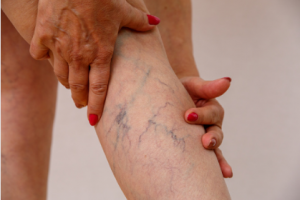Why Does It Make Sense to Get Treatment for Varicose Veins?
Varicose Veins is large varicose vein symptoms often seen commonly in both legs. Usually, blood flows from your heart directly to your legs via veins and arteries to the heart. Varicose veins usually have one-way veins that permit blood to flow back from your legs against gravity. Varicose Veins is classified as one of the most common venous conditions, second only to interstitial cystitis.
 The symptoms of Varicose Veins include swelling in ankles, feet or any other area. In addition, there are many other symptoms not listed here, such as tenderness, aching, pressure, pain, redness, itching, blisters, rash and skin discolouration. Most patients with this condition are overweight, elderly, female and diabetic. This varicose vein treatment guide can help you determine if you are a candidate for varicose vein treatment.
The symptoms of Varicose Veins include swelling in ankles, feet or any other area. In addition, there are many other symptoms not listed here, such as tenderness, aching, pressure, pain, redness, itching, blisters, rash and skin discolouration. Most patients with this condition are overweight, elderly, female and diabetic. This varicose vein treatment guide can help you determine if you are a candidate for varicose vein treatment.
Many patients are eligible for Varicose Vein Treatment in Adelaide. It is performed through a catheter inserted through a tiny incision into the skin. The catheter is used to inject the patients underlying compression vein material directly into the offending veins. Since the catheter is inserted directly into the body, very little physical discomfort is felt for most patients.
In some cases, patients experience mild discomfort after the treatment, but this typically resolves within a few days. In other cases, more serious venous conditions may need to be treated. In some cases, the compression veins may rupture and herniate, which could result in additional complications. These additional complications can include infections, blood clots and pulmonary embolism. Your healthcare provider will discuss your options with you regarding the potential of having additional Varicose Vein Treatment in Adelaide besides what is described above.
Several different procedures are done through an anesthetic. In this case, the anaesthetic is injected into the veins to block them from functioning properly. The procedure can be performed under regional or local anesthesia, depending on where the needle will be inserted.
Another procedure that can be performed during an anaesthetic is sclerotherapy. Sclerotherapy involves injecting a chemical sclerant into the small veins. The tolerance irritates the vessel lining, which causes the vein to swell and create pressure. After being injected with a large chemical tolerant, the vessel becomes engorged and bulges out. This causes blood to rush into the area, creating the bulging effect. This procedure is often used to treat varicose veins located around the neck, legs, or feet.
The last procedure that is sometimes done during inpatient treatment for a venous condition is balloon catheterisation. During this procedure, a tiny pump is attached to a catheter that is inserted into the vein. The pump inflates the catheter, which causes the pump to suck up the fluid present in the varicose vein. Because of this, swelling occurs around the inflated pump, which results in the reduction of the swollen area. This procedure is best done on patients with little to no symptoms and can move around daily without noticeable issues.
These are just a few of the many treatments available today to treat patients suffering from this condition effectively. Although they are effective, not all patients will experience the same results. You must discuss your symptoms with your healthcare provider to determine the best course of treatment for you.